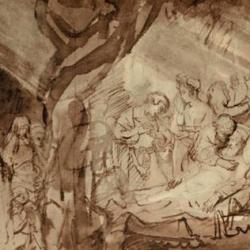The Economist’s review of Thomas Lacqueur’s The Work of the Dead highlights the shifts in our funeral customs over the past few centuries: “A large part of the book is devoted to the slow transition from churchyards to cemeteries, a story of changing sensibilities, epitomised by the gradual replacement of the epitaph Hic jacet (‘Here lies the body. . .’) by the less corporeal ‘In memory of. . .’ . It is about the rise of material refinement during the 18th century, about anticlericalism and the decline of superstition. Once death was ‘stripped of superstition,’ writes Mr Laqueur ‘and revealed in all its natural boldness,’ the enlightened world recoiled.”
This enlightened recoil produced an odd sentimentality concerning death: “A veiled way of imagining death needed a different kind of space. Elysium and Arcadia, nymphs and shepherds, were already familiar from the long tradition of pastoral poetry and from paintings—in particular, Nicolas Poussin’s ‘The Arcadian Shepherds’ from 1637-38. Architects and landscape gardeners working on grand English estates—Sir John Vanburgh at Castle Howard and Stowe, William Kent at Rousham—were creating them on the ground. Here was something to trump the churchyard. Serene and clean, the classical world appealed to the hygienists and sanitation men too, to become the inspiration for cemeteries.”
The attempt to veil the corpse was only partially successful. Instead of hiding death, it created unsettling juxtapositions of death and chubby cherubs and other Victorian bric-a-brac. Lost was the old realism of Christian funeral practice, and the Christian confidence that the living and the dead formed a single communion of saints.











